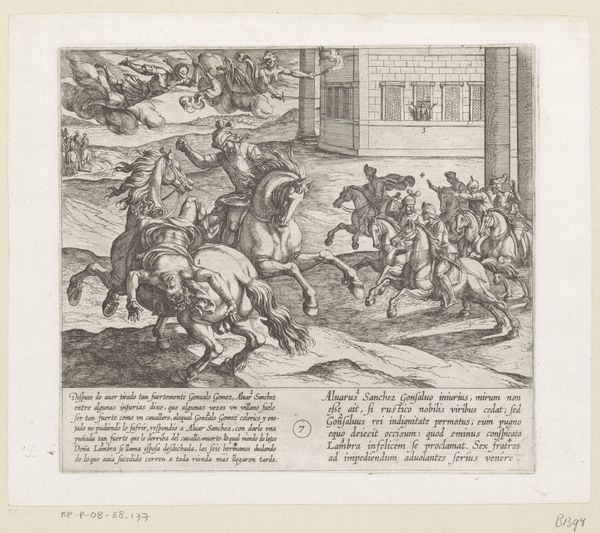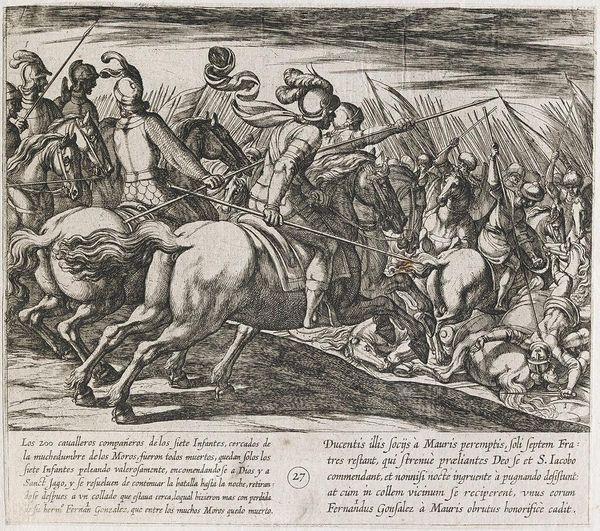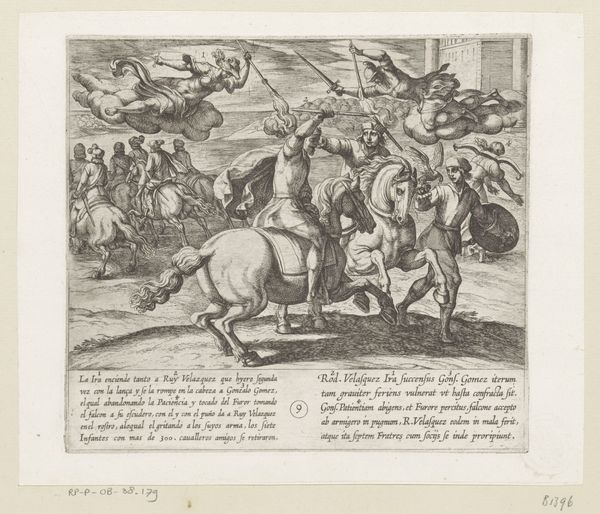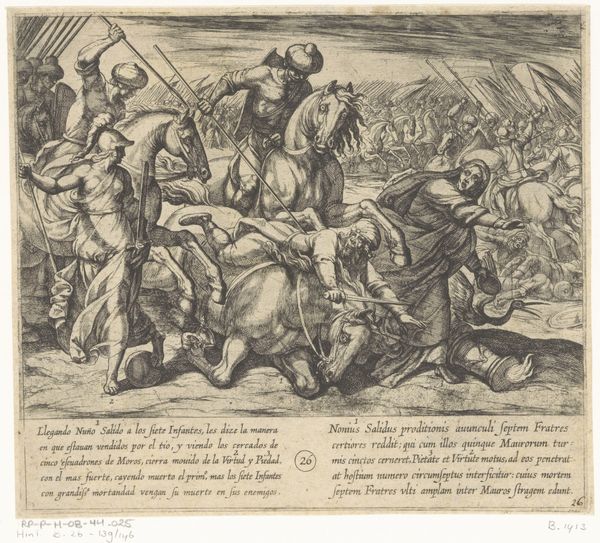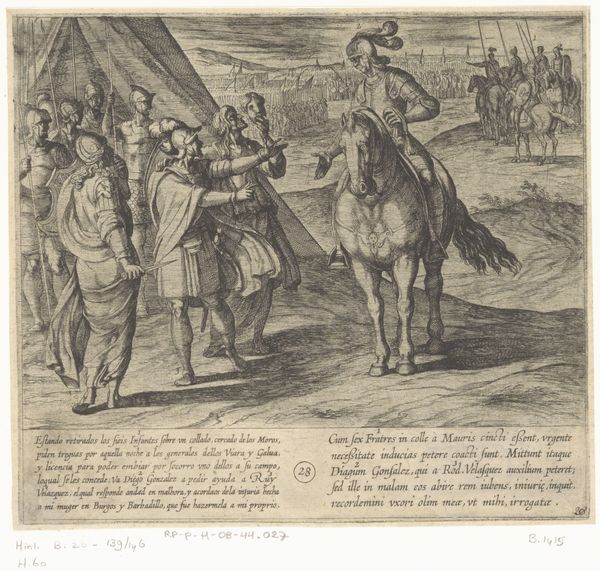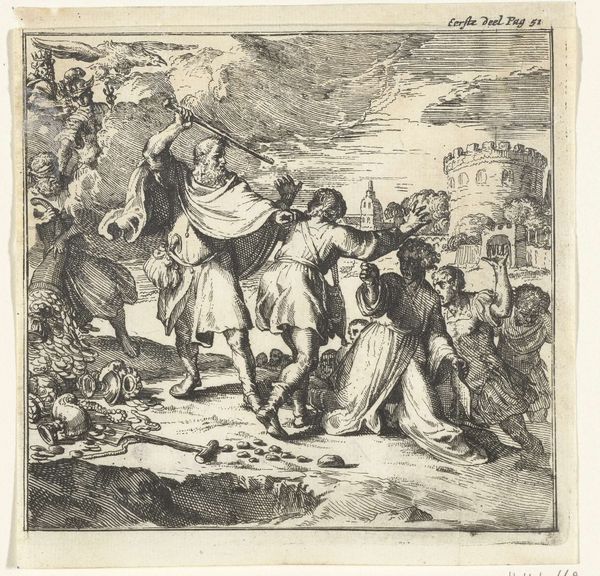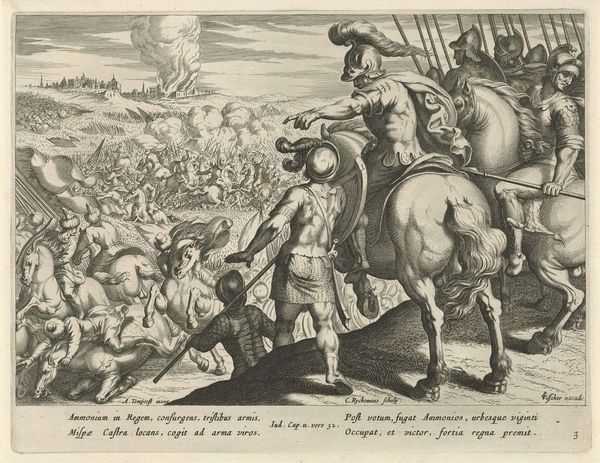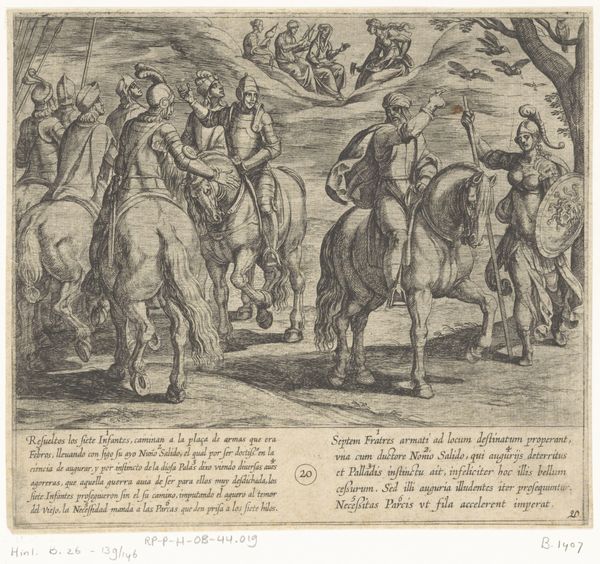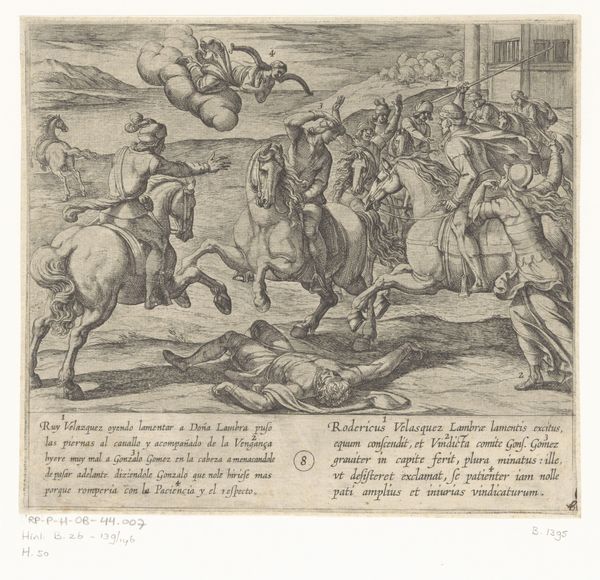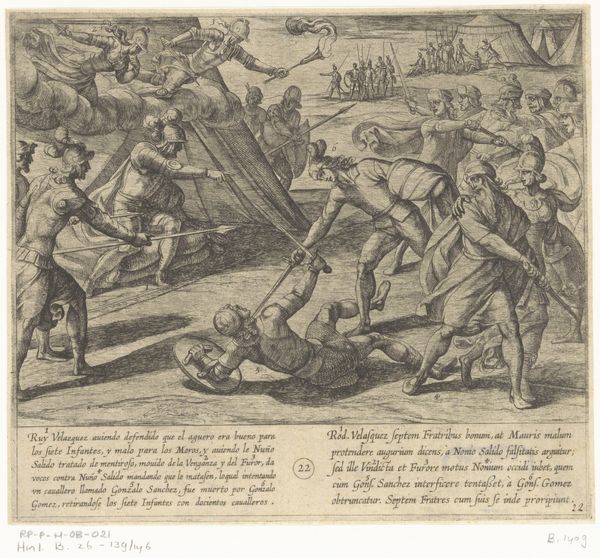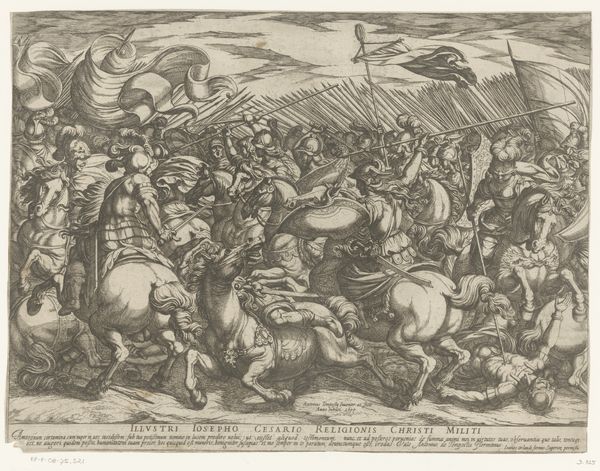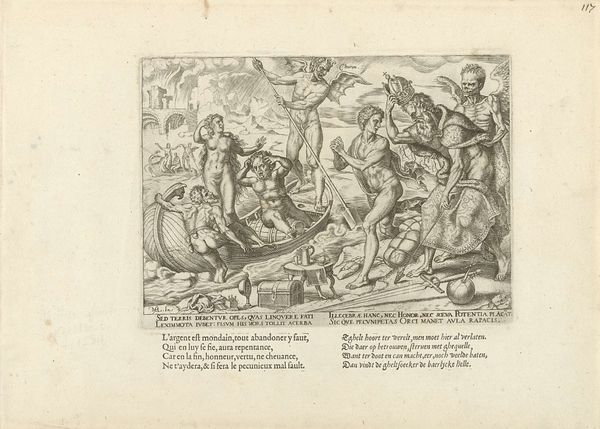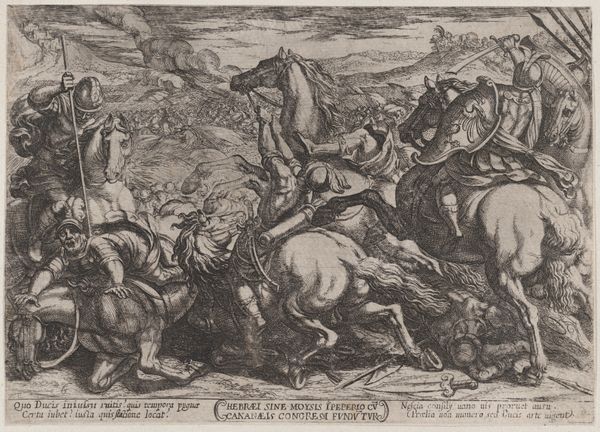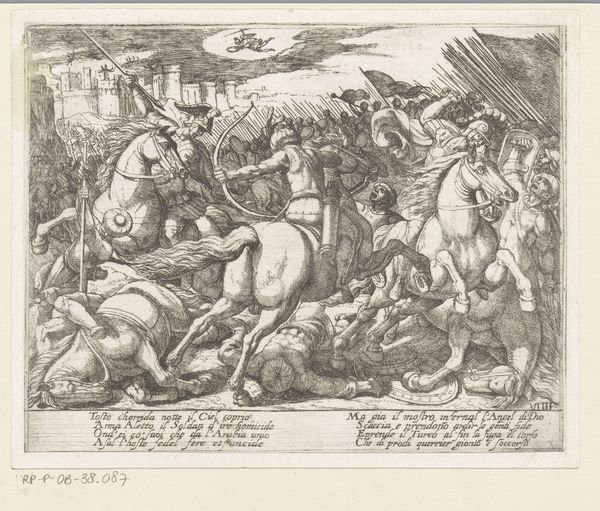
Alle ruiters behorend bij de zonen van Lara worden afgeslacht evenals Fernan Gonzalez 1612
0:00
0:00
drawing, print, engraving
#
drawing
#
baroque
# print
#
old engraving style
#
figuration
#
line
#
history-painting
#
engraving
Dimensions: height 185 mm, width 206 mm
Copyright: Rijks Museum: Open Domain
Curator: Immediately, I’m struck by the chaotic energy—it’s like a frozen explosion. Editor: That energy really speaks to the tumultuous scene depicted in Antonio Tempesta’s 1612 engraving, titled "Alle ruiters behorend bij de zonen van Lara worden afgeslacht evenals Fernan Gonzalez,” here in the Rijksmuseum's collection. Curator: The title alone feels like a battlefield! It really primes you for this frenetic drama unfolding with rearing horses and clashing swords. What I see is a raw, immediate vision. Editor: Tempesta, working in the Baroque style, aimed to do precisely that, conveying the brutality of conflict through detailed rendering of figures in motion. What’s fascinating from a material perspective is to consider how these kinds of prints functioned. They were mass-produced. Curator: That's interesting; thinking about that, the engraving transforms what feels like a spontaneous glimpse into something widely disseminated, packaged for public consumption almost like a news report. Editor: Exactly. Prints like this circulated widely, disseminating stories and shaping perceptions of historical events for audiences who likely never witnessed battle firsthand. So, how does that affect our reading? Does understanding its reproductive context change how we perceive it now? Curator: Absolutely. The very act of replicating this scene over and over… it numbs you, almost, desensitizes you to the violence. Does it sanitize what surely must have been a horrible event to begin with? Editor: Precisely the effect, maybe. It definitely reframes my experience of this work knowing it could’ve operated as propaganda or documentation during its period. Curator: To consider these kinds of details really makes me question our impulse to assign the quality of uniqueness or some sort of artistic 'aura' to such prints when really they were commercial artifacts, manufactured for consumption in huge numbers. Editor: A poignant perspective. It moves us from admiring artistic flair to examining art’s active role within wider socio-historical systems, challenging conventional art world norms around originality. Curator: Reflecting on this engraving, I feel caught between admiring its skill, the execution involved, the technical qualities, while wrestling with the historical implications, knowing of the potential manufacturing that made it a cog within sociopolitical machinations of its moment. Editor: Indeed. This journey revealed to me once again the potency held when appreciating the materials and manufacture of an artwork alongside more instinctual feelings and reactions toward that artwork, and both considerations can bring depth to our reading.
Comments
No comments
Be the first to comment and join the conversation on the ultimate creative platform.
